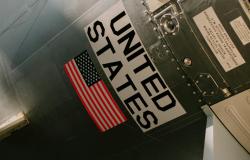America’s Cold Wars: Why China is not the USSR

Toro Hardy compares the utterly different strengths shown by China and the late Soviet Union as America’s rivals.
By the end of the 1970s, the Soviet Union was sustaining a defense budget estimated to be bigger than that of the United States. However, its GDP was but a fraction of the U.S.’. In addition, while the American economy was highly diversified, the USSR was exceedingly dependant on its oil and raw material exports. In other words, Soviet military expenditures not only imposed an irrational economic burden on the country but remained contingent on inherently volatile sources.
As if that was not enough, the United States was able to “offset” the Soviet’s advantage in force size, by maintaining a technological edge. This translated into the need for even bigger expenditures to compensate for the technological gap. Moreover, as the competition between the two superpowers was global, so were the scenarios that required a Soviet military presence.
Huge expenditures, unreliable incomes
By mid 1980s the Soviet Union’s defense expenditures represented a whopping 17 percent of its GDP. That, with a gross domestic product of about one-sixth the size of the United States’. However, according to Eduard Shevardnadze, Gorbachev’s Minister of Foreign Affairs, that amount actually reached 50 percent of the USSR’s GDP (Gaddis, 2005, Chapter Six; Kroenig, 2020, p. 125; Harvey, 2003, p. 330).
Whatever the real percentage of the Soviet defense expending in relation to the country’s GDP, or the true size of its GDP in relation to the U.S.’, one thing is certain: The amounts involved were not only irrational but transformed that country into a hyper militarized society. Excluding a few shop window sectors such as the space program or some areas of medicine, the Soviet economy was simply crushed as a result. Moreover, while in the 1970s and 1980s around 25 percent of the global economic activity took place in the U.S., the Soviet economy was basically dependent of its oil exports. That cut both ways. Moscow benefited from the price increases that resulted from the Arab oil embargo triggered by the 1973 Egyptian-Israeli war. However, it was badly hit by the downfall of oil prices in mid 1980s. In other words, while Washington’s military expenditures remained on solid ground, Moscow’s were tied to the vagaries of geopolitical or market forces beyond its control (Kroenig, 2020, p. 144).
Despite the high oil prices of the 1970s the Soviet economy did not grow during that decade, while it overtly contracted during the early 1980s. In fact, since the first half of the 1960s the Soviet Union had been stuck in the so called “long stagnation”, with little or no economic growth. However, its economy went into shambles when the oil prices plummeted. The Soviet economy, simply put, was moribund (Harvey, 2003, p. 328; Gaddis, 2005, Chapter Six; Glasser, 2019).
Offset
In comparison, the U.S. was able to offset the game by maintaining a technological edge. A First Offset Strategy took place in the 1950s, during Eisenhower’s time, when Moscow showed overwhelming superiority in conventional forces. Washington, however, had refused to pay the economic penalty of matching the Soviets man-for-man or tank-for-tank. To the contrary, Eisenhower aimed at a smaller but technologically superior force that relied on strategic and tactical nuclear weapons. His so called “New Look” national security policy referred to atomic weapons as “more bang for the buck”. Conventional forces, more demanding on the “buck”, were cut dramatically (Herring, 2008, p. 659).
At the end of the 1970s, during Jimmy Carter’s time, a Second Offset Strategy was put in place. Since the beginning of that decade, it had become evident that the First Offset Strategy had run its course. Not only had Moscow’s nuclear arsenal become as powerful as that of the U.S.’, but its conventional forces were able to match those of NATO, quality wise.
To turn things around, Washington undertook the development of conventional weapons with “near zero miss” capabilities through their ability to“look deep and shoot deep”. This implied the operational merging of several weapon systems, such as airborne targeting radars, guided anti-armour sub munitions, missiles and air-delivered bombs, and ground-based data processing stations. This military-technological revolution allowed guided munitions to attain battlefield results comparable to those of tactical nuclear weapons. The Soviet Union was forced, as a result, to expend more to compensate in volume of armaments what they lacked in technological proficiency (Work and Grant, 2019).
Soviet defence expenditures ran high for an additional reason – being a superpower implied a multifaceted military agenda, involving several geographic scenarios at the same time. In Europe, it deployed its SS-20 intermediate-range nuclear missiles which led to America’s counter deployment of the more accurate and advanced Pershing II. In Afghanistan, it deployed more than 300,000 soldiers in what came to be known as the USSR’s Vietnam. In Africa, it provided military equipment and financing to its Cuban subrogate troops, which were fighting to impose or sustain Marxist regimes. As a result, the Soviet leadership failed to perform the most fundamental task of any viable strategy – the efficient use of limited means to accomplish carefully chosen ends (Gaddis 2005, Chapter Six; Breyton, 1979).
Quagmire
Moscow’s quagmire multiplied several fold when Ronald Reagan entered office in 1981. He decided not only to put an end to “détente” and to “roll back” communism all around the world but also aimed to make nuclear-armed missiles obsolete by developing a Strategic Defense Initiative. This, while pressing for regime change in Moscow itself. Some background is required in this regard.
“Détente” with the USSR was the offspring of both Richard Nixon and Gerald Ford. In essence, it aimed at freezing the Cold War in place. Instead of simply freezing it, though, Jimmy Carter sought to reduce nuclear strategic arsenals. However, after the 1979 Soviet invasion of Afghanistan he discarded such initiatives and began taking punishing measures against Moscow. This included the Offset Strategy (Gaddis 2005, Chapter Six).
Reagan went much further in this direction. His objective was to push the Russian bear against the ropes. The idea that the Soviet Union had become an equal of the United States was thus flatly rejected. He not only proceeded with a rhetorical onslaught of the USSR, but by 1985 America’s military budget had almost doubled in relation to the five years before. In addition, he made his intent of building defenses against offensive nuclear weapons public, thus upsetting the delicate equilibrium upon which deterrence was based.
Reagan’s Strategic Defense Initiative aimed at exploiting the Soviets’ backwardness in computer technology. And although Washington was decades away from being able to develop an effective missile defense capability, he successfully convinced the Soviets of the feasibility of such a project. Moreover, Reagan elevated the costs of Soviet actions in every corner of the world, beginning in Afghanistan. Eventually, Moscow could take no more. Perestroika followed and with it the beginning of the end of what once was a mighty empire. (Gaddis 2005, Chapter Six).
A different game
In confronting China within a new Cold War, the U.S. finds itself on completely different ground. China accounts for 25 percent of the global industrial output and by 2017 was already contributing to one third of the global economy’s growth. China might be surpassing America’s GDP in absolute terms, while it already did so in Purchasing Power Parity. Beijing certainly needs to protect its new geopolitical and economic status through larger military expending. This may lead it to equate or even outspend the U.S. militarily, something that it could do if it so wishes (Sutter, 2020, p. 211; Pillsbury, 2015, Chapter 9).
However, even by spending less on defense than the U.S., China has been able to maintain a technological edge in asymmetric weapons. Meaning, weapons priced at a fraction of the targets that they aim to destroy or render useless. This is the military equivalent of the disruptive innovation of Amazon, Uber or Airbnb to the traditional industries with which they compete. In other areas where the U.S. enjoys of technological advantage, though, the gap is narrowing.
Washington has a global reach that forces it to maintain a military presence in different corners of the world. In contrast, Beijing gathers the bulk of its forces in its own neighborhood in pursuit of an area-denial/anti-access strategy. While the U.S. diffuses its strength, China concentrates it.
America’s containment of the Soviet’s expansionist impulses led them to confrontations in multiple geographical scenarios, which was highlighted by Reagan’s actions. Containing China is a much more complicated endeavor. How to confine it within certain boundaries to avoid its expansionism, when what China wants is precisely to avoid outside penetration within its self-defined boundaries? How to contain someone that aims at containing you? Especially so, if it holds the hammer within its self-selected boundaries.
This is, no doubt about it, a different ball game altogether.
Alfredo Toro Hardy, PhD, is a retired Venezuelan career diplomat, scholar and author. Former Ambassador to the U.S., U.K., Spain, Brazil, Ireland, Chile and Singapore. Author or co-author of thirty-six books on international affairs. Former Fulbright Scholar and Visiting Professor at Princeton and Brasilia universities. He is an Honorary Fellow of the Geneva School of Diplomacy and International Relations and a member of the Review Panel of the Rockefeller Foundation Bellagio Center.
Photo by Dylan Spangler
References:
Breyton, Abbot A. (1979). “Soviet Involvement in Africa”, The Journal of Modern African Studies, Vol. 17, Number 2.
Gaddis, John Lewis (2005). The Cold War: A New History, New York: The Penguin Press.
Glasser, Susan B. (2019). “Putin the Great”. Foreign Affairs. Sept/Oct.
Kroenig, Matthew (2020). The Return of Great Power Rivalry. Oxford: Oxford University Press.
Harvey, Robert (2003). Comrades: The Rise and Fall of World Communism, London: John Murray.
Herring, George C. (2008). From Colony to Superpower: U.S. Foreign Relations Since 1776, Oxford: Oxford University Press.
Pillsbury, Michael (2015). The Hundred Year Marathon: China’s Secret Strategy to Replace America as Global Superpower, New York: Henry Holt and Company.
Sutter, Robert (2020). “China Relations with the United States” in Shambaugh, David, Editor, China & The World. Oxford: Oxford University Press.
Work, Robert O. and Grant, Greg (2019). “Beating the Americans at Their Own Game”, Center for a New American Security, June 6.


